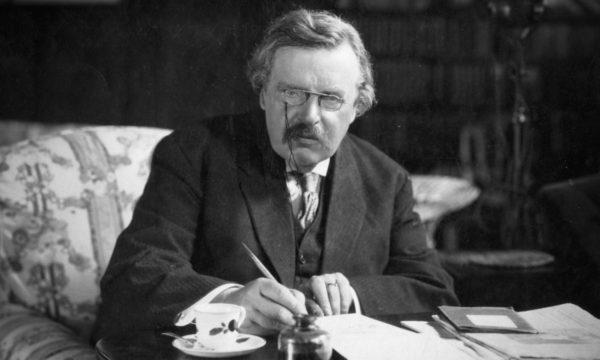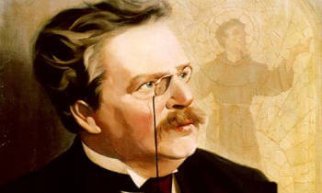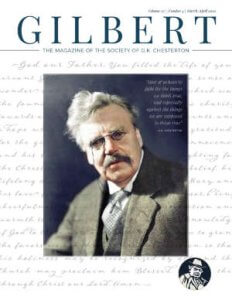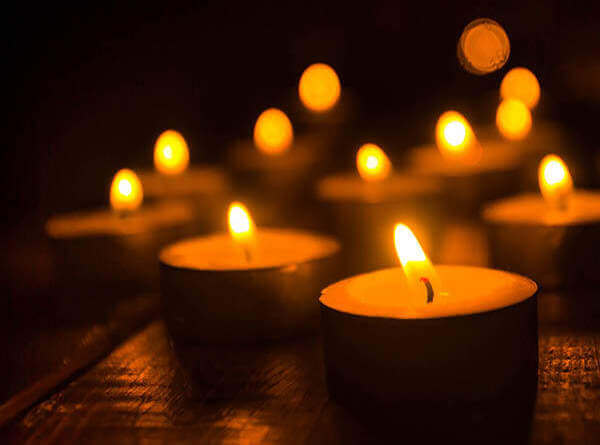What do you think of when someone uses the word, “Plakkopytrixophylisperambulantiobatrix”?
For Chesterton (who is the only person I know to have used the word – well, other than Peter Floriani), the word refers to a twenty minute holiday from writing fiction. It is the title of a poem in the book The Coloured Lands, a totally delightful collection of essays, sketches, poems, short stories, and some indescribable stuff from Chesterton, most of which were written for fun rather than for work. It was compiled by Maisie Ward just after Chesterton’s death. As she says in her introduction, “In this book we go for a holiday with Chesterton.” We are his guest as he takes us on a journey that includes excursions into the past, into Elfland, and even half hours in Hades.
The title story is a fairy tale that Chesterton made for one of his toy theatre productions, and is illustrated by his cut-out characters. Another illustrated fairy tale is “The Disadvantage of Having Two Heads” which he wrote for a little girl, giving it away without another thought. Fortunately Beryl Blanche Delaforce preserved it for posterity. There are several ballades and poems, including an ode to dissection in “The Joys of Science.” Interspersed between the stories and poems are wonderfully comic sketches of historical characters (“Immortal Idiots”) and caricatures of Chesterton by Chesterton, such as “As I Would Like to Be” set against “As I Am.” We even seeing him interviewing Shakespeare and being scolded by Queen Victoria.
The essay “On Household Gods and Goblins” is a stunner and contains the unforgettable line: “For children are innocent and love justice; while most of us are wicked and naturally prefer mercy.”
Besides being a holiday, it is a book of colors. It not only features some of the few full-color drawings by Chesterton, but color is almost a unifying theme for this wild collection, as we consider of the suggestive qualities of Burnt Sienna and the utter appropriateness of blue for the sky and green for the grass.
Color always means something. Chesterton explores this idea in a probing essay, “The Artistic Side”:
I know no better exercise in that art of wonder, which is the life of man and the beginning of the praise of God, than to travel in a train through a long dark almost uninterrupted tunnel: until the traveller has grown almost accustomed to dusk and a dead blank background of brick. At last, after long stretches and at long intervals, the wall will suddenly break in two, and give a glowing glimpse of the land of the living. It may be a chasm of daylight showing a bright and busy street. It may be a similar flash of light on a long lonely road of poplars, with a solitary human figure plodding across the vast countryside. I know not which of the two gives a more startling stab of human vitality. Sometimes the grey facade is broken by the lighted windows of a house, almost overhanging the railway-line; and for an instant we look deep into a domestic interior; chamber within chamber of a glowing and coloured human home. That is the way in which objects ought to be seen; separate; illuminated; and above all, contrasted against blank night or bare walls; as indeed these living creations do stand eternally contrasted with the colourless chaos out of which they came. Travelling in this fashion, the other day, I was continually haunted, and almost tormented, with an impression that I could not disentangle; nor am I at all confident that I can disentangle it here.
It seemed to me that I saw very strange sights; which ought to have been significant sights. I looked suddenly through an open window into a little room that was filled with blue light; something much bluer than we see in moonlight, even once in a blue moon. It came apparently from the blue shade that completely hooded a lamp standing on the table; there was nothing else on the table but an open book, which gleamed almost pale blue in that bleak luminosity. There was nobody there; there was nothing else. And I had an indescribable subconscious sense that it ought to mean something; and there massed vaguely at the back of my mind, like blue clouds, the colours that cling about the Blessed Virgin in the old pictures and the visions seen in narrow rooms and cells. Then again I saw a square patch of burning red, which was but the red curtain covering a lighted room. But there was a shadow that moved sharply across it, lifting long arms, arms of an unnatural exaggerated length, and making the black pattern of a cross upon the burning scarlet. It was impossible not to feel that somebody had made a signal to the train. And yet somebody had only stretched his arms, probably with a yawn, before going indifferently to bed. All along that night journey there were these signals signifying nothing. And I grew conscious, in a way quite beyond expression, that there is indeed a poetry of modern life, and of the modern cities; but it is in some strange way a poetry of misfits; a tangle of misunderstood messages; an alphabet all higgledy-piggledy in a heap. Beautiful things ought to mean beautiful things. And the case for simpler conditions is that, on the whole, they do. That indestructibility of religion, and even of ritualism, which puzzles the poor old rationalist so much, is not a little due to the fact that in ritual, for the first time, modern men see forms and colours placed where they mean something. Anybody can see why the priest’s vestment on common days is green like the common fields, and on martyrs’ days red as blood. But that blood-red curtain I saw from the train either commemorated no martyrdom; or the man crucified within did not know that his martyrdom was commemorated.





